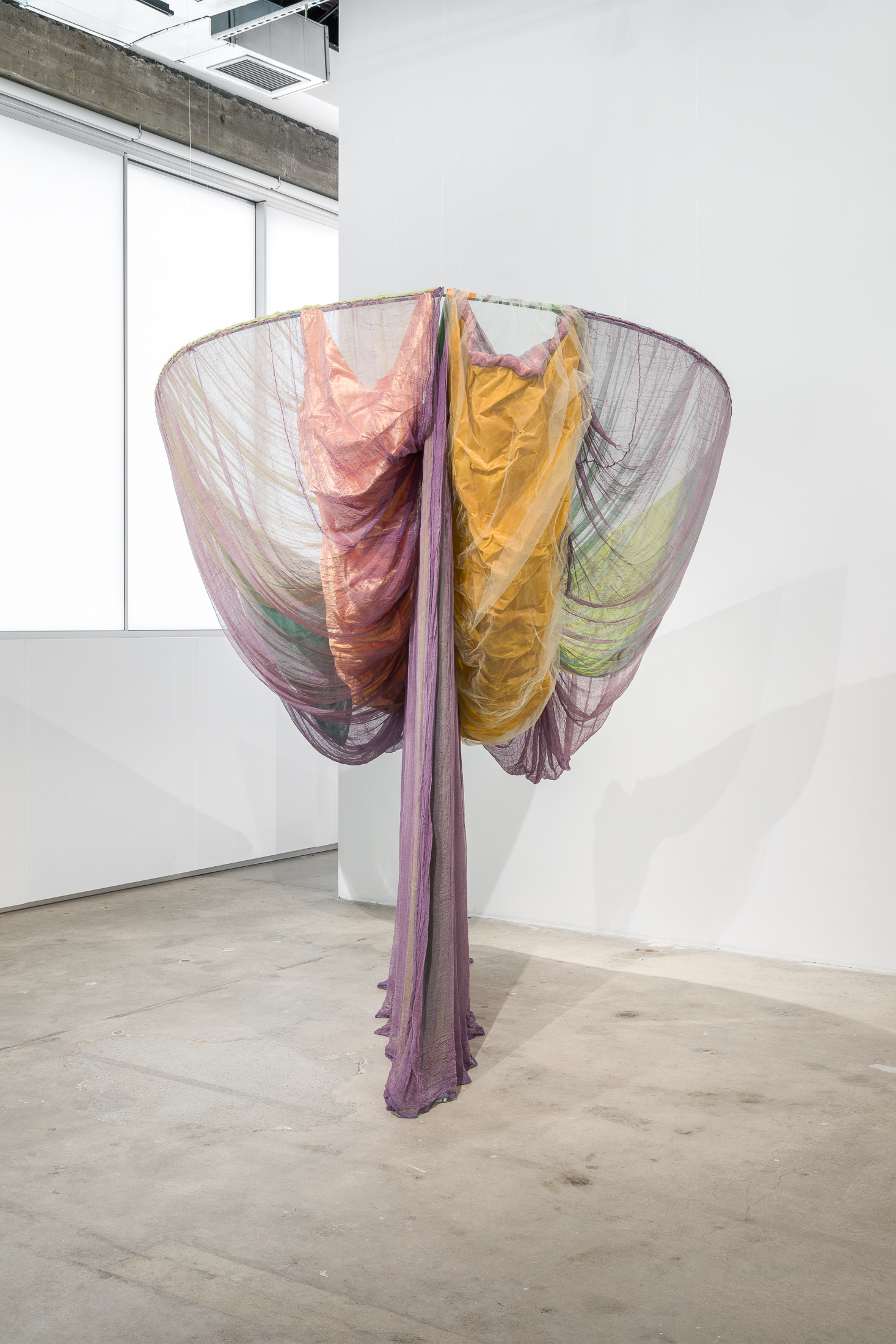Rosemary Mayer: Ways of Attaching | Artforum
Nov 02 2021

“Ways of Attaching” is the first comprehensive institutional exhibition devoted to the art of Rosemary Mayer (1943–2014), and adds even more knotty complexity to the artist’s story. The show explores a cross section of Mayer’s oeuvre, including her process-based text pieces of the 1960s and the durational installations of the ’80s. Sister to poet Bernadette Mayer, for whose work she created numerous illustrations, Mayer became known in the mid-’70s for her eccentric large-scale fabric sculptures with titles that reveal her broad historical interests: Take Hroswitha, 1972–73, which is named for a tenth-century Saxon poet, or Galla Placidia, 1973, which is titled after a fifth-century Roman empress. Her turn to a traditionally gendered medium in 1971 was intentional, occurring the same year she started participating in a consciousness-raising women’s group and shortly before she cofounded the feminist arts cooperative A.I.R. Gallery in Manhattan.
Among the historical figures Mayer drew upon, most intriguing is Mannerist painter Jacopo da Pontormo, whose work she encountered on a trip to Europe in 1975. (She was so enthralled by the experience that she published her own English translation of da Pontormo’s diary.) The sixteenth-century artist is key to understanding the impulse driving Mayer’s drawings of the late ’60s, which often depict free-floating festoons or isolated garments, emphasizing the way textiles define the body or accentuate its gestures. One could say that Mayer embraced the Mannerist model as a way of upending the dogmatic conversations around formalism that, by the early ’70s, had become as overdetermined as perspectival composition had been in da Pontormo’s time. (In the corner of one 1972 study for a fabric work, Mayer scribbled, “UGH, A PAINTING.”) She even produced a small altarpiece-shaped painting of a rainbow-patterned swath of drapery on a gold-leaf ground—The Fifth Angel Sleeve, 1973—in homage to Matthias Grünewald, who, like Pontormo, eschewed the classicism of his era. Perhaps the titular sheath is part of a vestment meant for saintly mavericks, like the aforementioned artists and, of course, Mayer herself.
- By Ian Wallace
